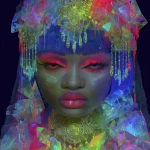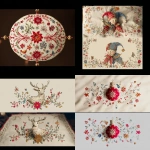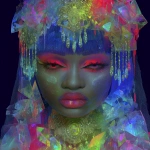Explore the Best AI Image Gallery

The Digital Canvas: How Wearable Tech is Transforming Creative Expression
The lines between the physical and digital realms are blurring, fueled by the rapid evolution of wearable technology. This innovative intersection has a profound impact on the creative industry, offering artists, designers, and innovators unprecedented tools to express themselves and engage audiences in entirely new ways. From interactive installations to personalized artistic experiences, wearable tech is reshaping the very fabric of creative expression.
Wearable Tech: A Canvas for Innovation
Wearables are no longer just fitness trackers or smartwatches; theyre becoming powerful extensions of our creativity. Artists are experimenting with haptic feedback gloves that translate emotions into tactile sensations, allowing viewers to feel the artists intent through touch. AR glasses enable immersive experiences where users can interact with virtual artworks and sculpt digital landscapes in real time.
- Interactive Installations: Wearable sensors integrated into sculptures or architectural designs allow visitors to trigger changes in light, sound, or movement, creating dynamic and personalized art experiences.
- Personalized Artistic Expression: Imagine a world where your clothing reacts to your emotions, transforming color or pattern based on your mood. Wearable technology enables this level of personalized artistic expression, blurring the lines between garment and artwork.
- Gesture-Based Control: Artists are leveraging motion capture and gesture recognition to translate movements into visual art, allowing for a more intuitive and expressive creative process.
The Ethical Dimensions of Digital Canvas
As with any powerful technology, wearable tech in the creative sphere raises ethical considerations that must be carefully addressed.
- Data Privacy: Wearable devices collect vast amounts of personal data about users movements, emotions, and even their artistic preferences. Its crucial to ensure transparency and user control over this data.
- Accessibility and Inclusivity: The cost and complexity of wearable technology can create barriers for underrepresented artists and communities. Efforts should be made to promote accessibility and inclusivity in the development and deployment of these technologies.
- Authenticity and Ownership: As AI-powered tools become increasingly sophisticated, questions arise about the authenticity of creative work generated by machines. Its essential to establish clear guidelines and ethical frameworks around AI authorship and intellectual property rights.
Future Trends: Where Will We Go Next?
The future of wearable tech in creative expression is brimming with exciting possibilities:
- Brain-Computer Interfaces: Imagine translating thoughts directly into art, bypassing traditional physical tools. Brain-computer interfaces hold the potential to unlock a new dimension of creativity.
- Immersive Collaborative Experiences: Wearable tech can facilitate real-time collaboration between artists regardless of their location, fostering global creative communities and pushing the boundaries of artistic expression.
- Personalized Education and Training: Imagine interactive learning experiences where students can experiment with different art forms and receive personalized feedback through wearable devices, democratizing access to creative education.
Conclusion
Wearable technology is not just a technological advancement; its a catalyst for transforming the way we create, experience, and understand art. By embracing its potential while navigating its ethical challenges, we can unlock a future where creativity knows no bounds and digital canvases become extensions of our imagination.







](https://images.ai-img.art/thumbnails/150/e6a179db327f0374ec327d0fdab48ac1f2dc47123eed103b0a41ed346280d07d.webp)




](https://images.ai-img.art/thumbnails/150/26c16e4f635deee86633de398088ca98d9bb748d6e7601436b07e882fab236cb.webp)





](https://images.ai-img.art/thumbnails/150/1202074d0d60b08b64d0f91f36468608aaac200a02b721cc8e6d8ec8a908432c.webp)








](https://images.ai-img.art/thumbnails/150/6c909fd6d38caac6572b592dd97831deb7d6562bba142798574677582676dfc1.webp)

](https://images.ai-img.art/thumbnails/150/655229c40961cb7ff5abd4b4190e02c94ea1a961106e7547a562649c945268be.webp)
](https://images.ai-img.art/thumbnails/150/60973df1d727dbbf8e6922b7e4836814ab6012106eb9dcfe99aea7aec15f3710.webp)

](https://images.ai-img.art/thumbnails/150/184b4b030e30be0a6d51b544226cb4cf2271977814d935d3aaa2b7529355b3b7.webp)
















